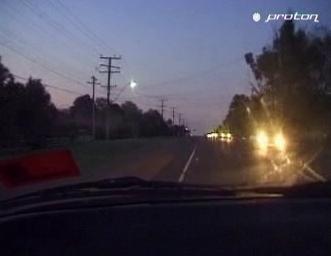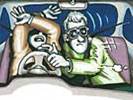Chapter 25: NIGHT DRIVING
After training drivers in Egypt we discovered many Egyptian drivers do not use any headlights when driving on the remote desert highways late at night....the theory being they use the moonlight and because of the lack of light they develop excellent night vision. What did surprise use however was the habit they had of blasting an approaching car with high beam to highlight their presence. Thus surely temporarily blinding the oncoming car.
TIPS FOR DRIVING AT NIGHT
- Look to your right and observe the roadside.
- Now look to your left, just to the right of any oncoming vehicle.
- Do not look at the headlights of any approaching vehicle.
- Observe the road surface in front of you.
- Then repeat the sequence again.
- Avoid being dazzled
TO COPE WITH HEADLIGHT GLARE
- Slow down.
- Do not look at the glaring lights of an oncoming vehicle. Instead look at your edge of the roadside.
- Glance at oncoming vehicle with your side vision to keep track of position.
- Keep your speed down until your vision has returned to normal.
- Note that it takes a lot longer for your eyes to adjust to sudden dark than to sudden light.
- Turn down your instrument panel illumination.
ILLUMINATION
The human visual system is capable of operating over an enormous range of illumination, due to 2 factors;
The pupil of the eye can contract or dilate to let in more or less light. After a period of darkness, receptor cells in the retina of the eye begin to regenerate. As such after 30 minutes of darkness our night vision can improve up to 10,000,000 times.
The pupil's rapid contraction or dilation maintains vision in sudden change in light condition. However the pupil's diameter can reduce (contract) 6 times faster to sudden brightness after darkness, than exposure to darkness after brightness.
As such entry to an undercover carpark, building, garage, tunnel or canopy of trees should be done with extreme caution since their is a period of reduced vision as our eyes adjust to the darkness. Glare from headlights or street lights can also reduce our vision.
When driving a night care must be taken to ensure headlights are not left on high beam when a vehicle approaches, as you are somewhat blinding the driver.
If a vehicle approaches you with their high beam on, look to the edge of the road on your side, to reduce the glare until they have passed. If they are approaching from a long way off, a brief flash of your high beam might notify them of their mistake. Remember flashing your lights at them constantly is only blinding them.
XENON HEADLIGHTS
Xenon is a heavy inert gas which produces alot of light when an electric arc is passed through it.
Xenon headlights (gas-discharge headlights) have xenon gas trapped in a small glass bulb. These bulbs can produce double the amount of light compared to a similar sized halogen lamp.
Xenon bulb therefore can be smaller to produce the same light levels, allowing car designers greater freedom.
The light given off also differs (from conventional headlights) as it contains more green and blue wavelengths.
Xenon headlights are accompanied by an electronic ballast unit which monitors the lamp temperature and regulates the supply of electricity. When xenon headlights are first turned on, the ballast unit allows a brief surge of high power to speed the lights innards up to 900º C where the best lighting is achieved.
Lastly xenon headlights have a similar lifespan to normal headlights (about 1500 hours) but do not fail suddenly. Instead they gradually go dim as the gases properties weaken.
(Written by Joel Neilsen, Managing Director, Safe Drive Training)







